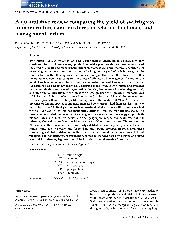摘要
Switchgrass (Panicum virgatum L.), a US Department of Energy model species, is widely considered for US biomass energy production. While previous studies have demonstrated the effect of climate and management factors on biomass yield and chemical characteristics of switchgrass monocultures, information is lacking on the yield of switchgrass grown in combination with other species for biomass energy. Therefore, the objective of this quantitative review is to compare the effect of climate and management factors on the yield of switchgrass monocultures, as well as on mixtures of switchgrass, and other species. We examined all peer-reviewed articles describing productivity of switchgrass and extracted dry matter yields, stand age, nitrogen fertilization (N), temperature (growing degree days), and precipitation/irrigation. Switchgrass yield was greater when grown in monocultures (10.9 t ha-1, n=324) than when grown in mixtures (4.4 t ha-1, n=85); yield in monocultures was also greater than the total yield of all species in the mixtures (6.9 t ha-1, n=90). The presence of legume species in mixtures increased switchgrass yield from 3.1 t ha-1 (n=65) to 8.9 t ha-1 (n=20). Total yield of switchgrass-dominated mixtures with legumes reached 9.9 t ha-1 (n=25), which was not significantly different from the monoculture yield. The results demonstrated the potential of switchgrass for use as a biomass energy crop in both monocultures and mixtures across a wide geographic range. Monocultures, but not mixtures, showed a significant positive response to N and precipitation. The response to N for monocultures was consistent for newly established (stand age < 3 years) and mature stands (stand age >= 3 years) and for lowland and upland ecotypes. In conclusion, these results suggest that fertilization with N will increase yield in monocultures, but not mixtures. For monocultures, N treatment need not be changed based on ecotype and stand age; and for mixtures, legumes should be included as an alternative N source.
- 出版日期2010-2
